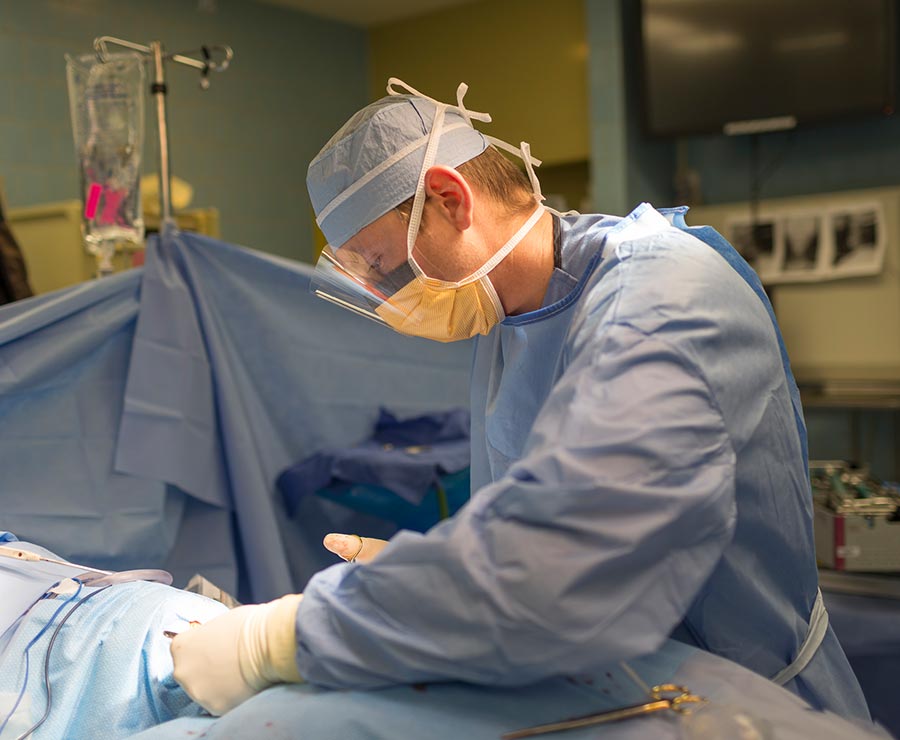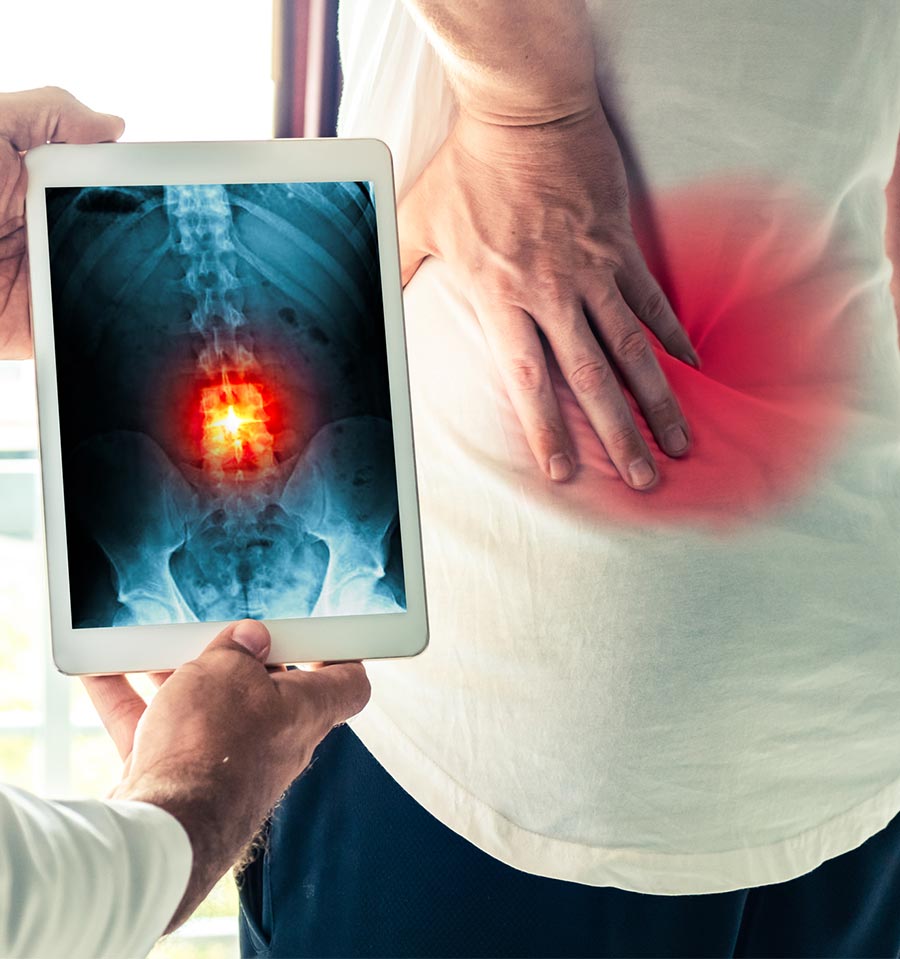
Patients who undergo spinal fusion surgery may experience lumbar radiculopathy some time afterwards.
The surgery may have been successful, but the patient may develop conditions unrelated to the surgery, such as lumbar radiculopathy.
Radiculopathy is a term used to describe the symptoms produced by the pinching of a nerve root in the spinal column. Lumbar radiculopathy occurs in the lower back and is also referred to as sciatica.
Symptoms of Lumbar Radiculopathy
Symptoms of lumbar radiculopathy may include:
- Weakness or loss of reflexes in the arms or legs
- Sharp pain in the back, arms, shoulders or legs that may be exacerbated by certain activities
- Numbness of the skin, “pins and needles”, or other abnormal sensations in the arms or legs
Causes of Radiculopathy
The condition may be caused by:
- Bulging or herniated discs
- Bone spurs, or areas of extra bone growth that may be caused by inflammation from osteoarthritis, trauma or other degenerative conditions
- Thickening of the spinal ligaments
- Spinal infections
- Cancerous and noncancerous growths in the spine
Treating Radiculopathy
Lumbar back pain may be treated by caudal canal injections, which may help reduce lower back and leg pain.


Benefits of a Caudal Canal Injection
A caudal canal injection can help reduce chronic lower back and leg pain caused by:
- Spondylosis
- Sciatica
- Spinal stenosis
- Herniated discs
- Facet joint pain
- Other back problems
A caudal injection is minimally invasive and has fewer risks than surgery.
Risks of a Caudal Canal Injection
The procedure is generally safe, with few side effects or complications. Rare complications may include:
- Bleeding or infection at the injection site
- Nerve problems that cause arm and leg weakness
- Increasing feelings of numbness or pain
- Incontinence
- Post-injection headache
- Stroke
- Spinal cord injury
- Difficulty sleeping
Who is a Candidate?
Patients who have had severe back pain for more than four weeks and have not responded to other treatments, such as physical therapy, may benefit from a caudal canal injection.
What to Expect During the Procedure
The patient will lie on the stomach on an x-ray table and receive intravenous medication to help them relax. Next, the physician will use an anesthetic to numb the lower back.
Under x-ray guidance, the physician will insert a thin needle into the patient’s back, just above their tailbone. A dye will also be injected to make sure the medication reaches the caudal space. The medication will be a mixture of anesthetic (to provide temporary pain relief) and steroid (for longer term relief).
The procedure will take up to 15 minutes and patients may go home the same day.
After the Procedure
Patients should not drive or engage in rigorous physical activity for 24 hours after the injection. Patients are able to continue their regular diet and medication immediately after the procedure.
The anesthetic will provide pain relief within 30 minutes after the injection, but the pain may return once the local anesthetic wears off. Patients will typically experience longer-term relief in two to three days, once the steroid begins to take effect. The duration of pain relief will vary; some patients may experience pain relief that lasts for months.

